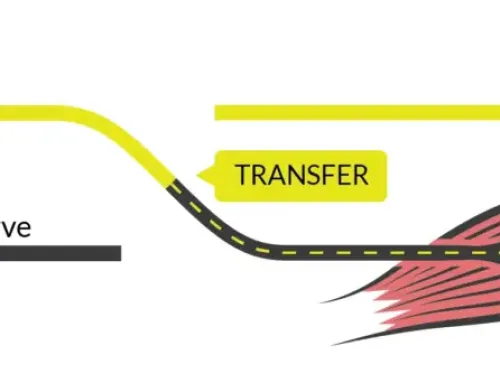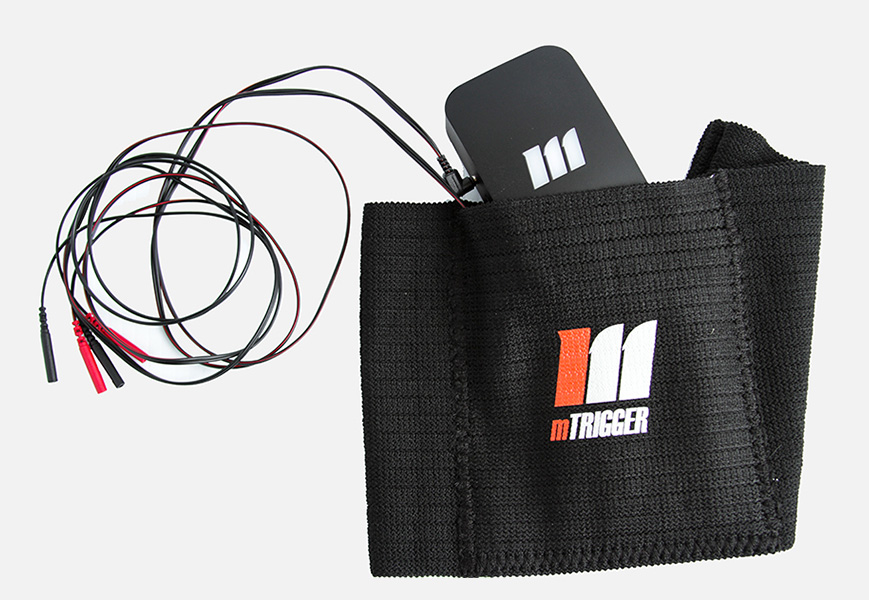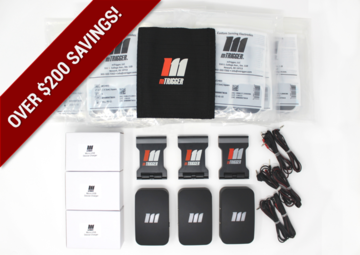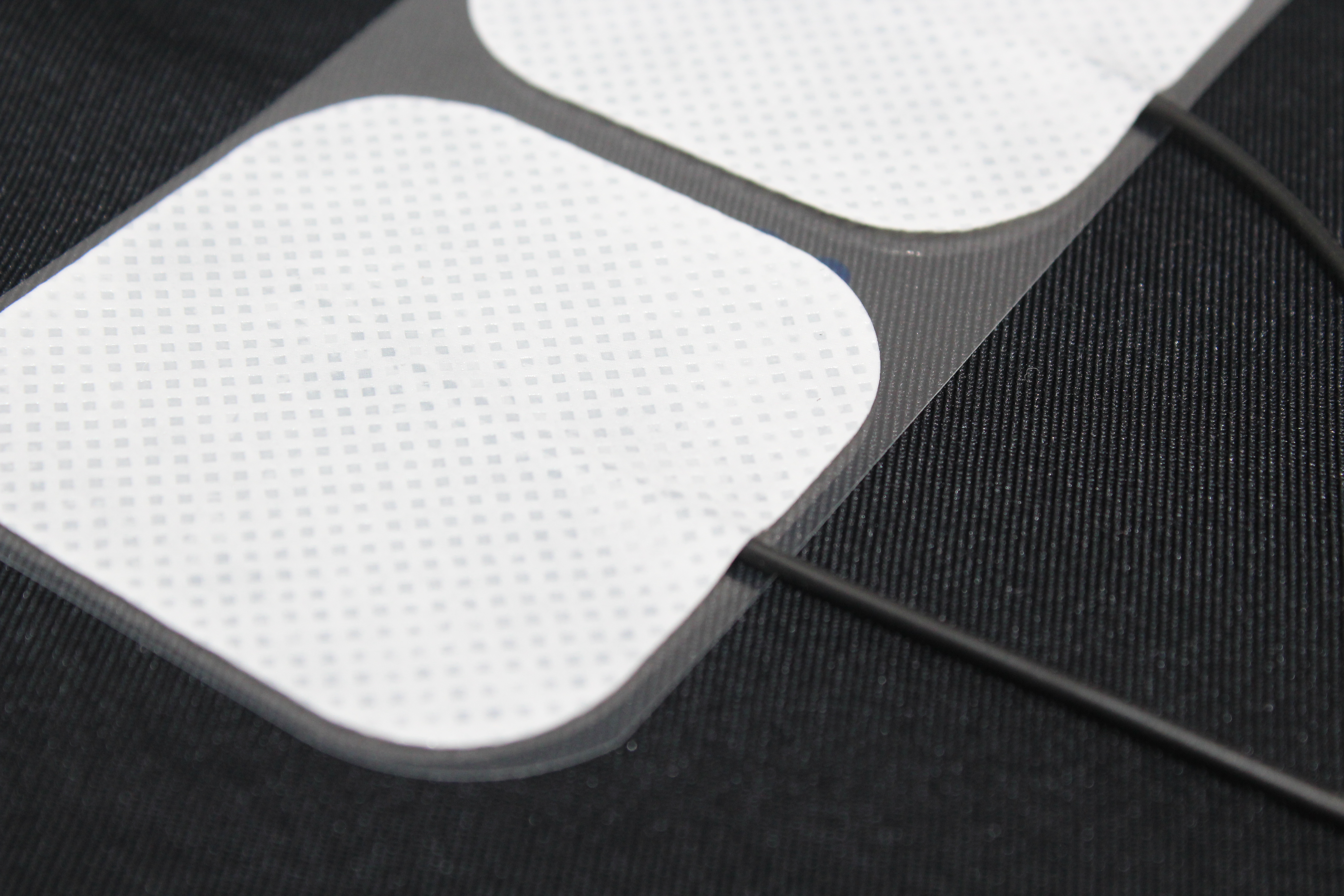In our previous blog, we discussed ways to utilize biofeedback for lower extremity injuries commonly see by Athletic Trainers. If you haven’t yet checked that out, click here. Now, lets continue by looking at some of the ways mTrigger biofeedback can be incorporated in to the Athletic Training room for upper extremity and low back injuries.
Shoulder Injuries
Injuries to the shoulder present as a wide variety of pathologies in the athletic training room; from shoulder impingement to labral tears, dislocations, and rotator cuff tendinopathies. Regardless, each of these has a vast need for the use of biofeedback. Poor scapular mechanics often as a result of pain, lead to poor muscle activation and subsequent compensation patterns. In athletes where the upper extremity dominates the majority of their sport, overcoming these movement faults is key. For these athletes, going through a motor re-learning program is often necessary to help restore proper shoulder muscle activation and movement.(1)
This is where biofeedback can change the results you see in the training room. While you are monitoring an entire team, making sure just one athlete in correctly activating their infraspinatus muscle during each rep of a shoulder external rotation exercise is just about impossible. By using real time surface EMG biofeedback, athletes get real time feedback on their performance and form during exercises. This ensures they are truly performing each rep to the best of their ability. Aside from this, having an immediate measure of their performance helps athletes continue to feel motivated throughout the rehab process. Check out some of these highly effective exercise for the shoulder using mTrigger biofeedback.
1. Use a single channel on the infraspinatus to help enhance rotator cuff activation.
2. Use single or dual channel set up to help re-enforce proper scapular activation of the lats and posterior cuff.
3. Use a dual channel set up to work on the muscle activation and timing of the upper and lower traps.
Elbow Injuries
Most elbow injuries tend to occur in throwing athletes as the elbow joint and surrounding ligaments/tendons undergo tremendous stress during the throwing motion.(2) Furthermore, the high repetition of throwing places these athletes at greater risk for overuse injury.(2) Research has demonstrated that the rehabilitation of the throwing athlete should encompass both scapular stability as well as flexor carpi ulnaris (FCU) and flexor digitorum superficialis (FDS) strength.(3-4) Both the FCU and FDS muscles cross the medial elbow joint and help to resist forces at the medial elbow.(4)
Working to achieve good scapular strength and stability for throwing athletes with elbow pain is a lengthy process and the perfect application for biofeedback. By using mTrigger biofeedback on the scapular stabilizers, athletes learn the correct activation pattern of scapular stabilizing muscles that will ultimately help to prevent reinjury and promote longevity of throwing.
A Thrower’s 10 program is often implemented by athletic trainers for elbow rehab with throwing athletes. While this type of program aims to improve the activation level of the rotator cuff muscles, using mTrigger biofeedback during these exercises helps to ensure athletes are getting the most out of each rep even when they can’t be supervised 100% of the time.
Wrist Injuries
Wrist injuries tend to nag athletes involved in gripping sports such as tennis, golf, gymnastics, or lacrosse all throughout the season. While the list of potential causes for wrist pain in athlete is quite lengthy, the use of biofeedback can prove very helpful with many of them. As athletes work to improve muscle activation levels and strength across the wrist joint, mTrigger biofeedback can help athlete to improve their ability to eccentrically activate during certain activities which is key during sports performance.
Low Back Pain
Over the course of a season, it is inevitable athletic trainers will deal with athletes experiencing low back pain. While the severity and cause of low back pain can vary tremendously, the need for biofeedback is consistent. Low back pain often comes with dysfunctional movement patterns and muscle weakness. Using biofeedback is an excellent way to help overcome these two key deficits.
Common presentations in athletes with low back pain such as over activation of the lumbar paraspinals, decreased strength, and lack of glute activation can all be addressed with mTrigger biofeedback.
Since the lumbar paraspinals and glute muscle both extend, athletes with back pain tend to compensate with their lumbar extensors to make up for a lack of strength in the glutes. Here is one way to help athletes begin to understand how to extend the hip without over activation of the lumbar spine.
* In this video, the electrodes are attached to the lumbar paraspinals. The athlete is trying to keep the muscle activation of the paraspinals low (in the red zone) and really focus on glute activation during the exercise.
Once this improved movement pattern is established, you can begin to progress an athletes’ exercises to target the glute muscles in a way that does not over stress the back. Take a look at this example using mTrigger biofeedback to teach proper movement.
Biofeedback helps these athletes to see their compensation pattern, and once they can see this more clearly, athletes are able to then make the necessary adjustments.
Summary
If you are not yet utilizing mTrigger biofeedback in the training room with your athletes, you are missing out. By using biofeedback, you can help athletes to stay engaged in their recovery, track results, provide autonomy and independence, increase motivation, and improve your workload management as an athletic trainer. All while seeing improvements in muscle activation, strength, and progressing towards the results you want.
References
- Antunes A, Filipe I, Cordeiro S, Rosa J, Carnide F, Matias R. Effectiveness of Three-Dimensional Kinematic Biofeedback on the Performance of Scapula-focused Exercises. doi:10.5220/0004928701730178
- Wilk KE, Macrina LC, Cain EL, Dugas JR, Andrews JR. Rehabilitation of the Overhead Athlete’s Elbow. Sports Health. 2012;4(5):404. doi:10.1177/1941738112455006
- Wilk KE, Arrigo CA, Hooks TR, Andrews JR. Rehabilitation of the Overhead Throwing Athlete: There Is More to It Than Just External Rotation/Internal Rotation Strengthening. PM R. 2016;8(3 Suppl):S78-S90. doi:10.1016/J.PMRJ.2015.12.005
- Erickson BJ, Harris JD, Chalmers PN, et al. Ulnar Collateral Ligament Reconstruction: Anatomy, Indications, Techniques, and Outcomes. Sports Health. 2015;7(6):511. doi:10.1177/1941738115607208
Sign Up for Blog Updates
|
Using mTrigger for Return to Sport
|








Leave A Comment